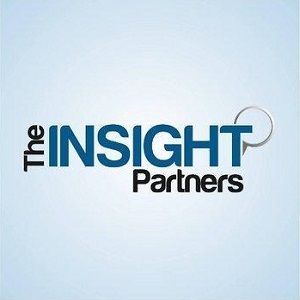Webbing Market Size, Trends, Growth Scenario and Analysis 2028Posted by Prabha Mahajan on October 20th, 2022  The Webbing Market is projected to reach US$ 1745.84 million by 2028 from US$ 1,195.35 million in 2020; it is expected to grow at a CAGR of 5.1% from 2021 to 2028. Webbing is a strong woven fiber available in flat strips or tube form; it is used as a substitute of rope. Conventionally, webbing is produced using cotton and silk, however, polymer, nylon, and polyester are replacing the traditional materials. Webbing is known for its properties such as convenience, tensile strength, and chemical resistance; it can be used as a replacement of steel wires, ropes, or chains in various industrial applications. Webbings are significantly used in military apparels, parachutes, climbing, automotive textile, fire safety gear, military goods, harnesses, packs, hiking gear, and others. Other than this, webbing is extensively used to produce protective equipment for oil & gas workers. With the significant investments in research and development activities, the use of webbing has been extended to several novel applications apart from conventional end uses, such as aerospace and defense, sports, textile, and fashion. In the aerospace industry, webbing is used in seat belts, designing cargo netting reinforcement, parachutes, and flight suits owing to properties such as high tensile strength. Further, webbing is effectively used to prepare uniforms and equipment, along with combat equipment such as military pouches, packs, personal load carrying equipment, and belts. The rising investments in advanced military products is expected to propel the demand for combat equipment, which is proliferating the growth of the webbing market. Webbing is used in the production of several sports items such as slings, harnesses, building materials for hiking, camping, and sporting equipment. Download sample PDF Copy https://www.theinsightpartners.com/sample/TIPRE00020354/ The growing focus toward personal well-being along with the increasing number of sporting activities such as camping, sports events, camping, hiking, and marathons is, therefore, expected to promote the demand for webbing. In the construction industry, webbing slings help raise up the tools and loads and can effectively wrap around odd-shaped loads at construction sites. Other than this, webbing is also used in the hardware industry by embedding with several forms of tie down hardware to extend its range of abilities. Polyester webbing is used in the preparation of pet leashes, collars, and harnesses. Also, nylon webbing is used in the production of outdoor furniture along with slack lining gear and tent adjuster. Additionally, in the medical industry, webbing is used in the preparation of safety bands and tapes in hospitals and other organizations. Several companies are offering webbing for diverse application bases. For instance, BRM manufactures webbing is ideal to use in a range of recreational applications such as binding tape, chin straps, harnesses, packs, climbing webs, parachutes, and balloon setups, which in turns propels the demand for webbing market. Based on end use, the webbing market is segmented into aerospace, automotive, military, and industrial and safety, fashion accessories, e-textile, sport goods, marine, medical, and others. In 2020, the automotive segment accounted for the largest market share. Webbing is a significant component of manufacturing of seat belts, safety harnesses, pull straps; edge binding for convertible tops; straps and binding for luggage nets; catch belts for airbags; and so on. Rise in demand for vehicles in developing economies such as India and China is supporting the growth of the market. According to the Global Status Report on Road Safety, the growing important and awareness about wearing a seatbelt to minimize the risk of a fatality among front seat passengers and rear-seat passengers has promoted the demand for webbing. The webbing market is segmented into five main regions—North America, Europe, Asia Pacific (APAC), Middle East & Africa (MEA), and South America (SAM). Asia Pacific would hold the largest share of the market in 2021. The dominance of this region in the global market is primarily attributed to the presence of strong industrial sector, including the manufacturing units of several prominent enterprises. The demand for webbing is high in verticals such as automotive, aerospace & defense, industrial and safety, fashion accessories, textile, and sports goods. Further, the rise in investments in the manufacturing sector provides lucrative opportunities for the growth of the webbing market in Asia Pacific. Favorable policies implemented by the government of India such as Atmanirbhar Bharat and Make in India are expected to create sufficient growth opportunities for the diverse industrial bases, which, in turn, would boost the consumption of webbings in the region. Read More @ https://www.theinsightpartners.com/reports/webbing-market Like it? Share it!More by this author |


